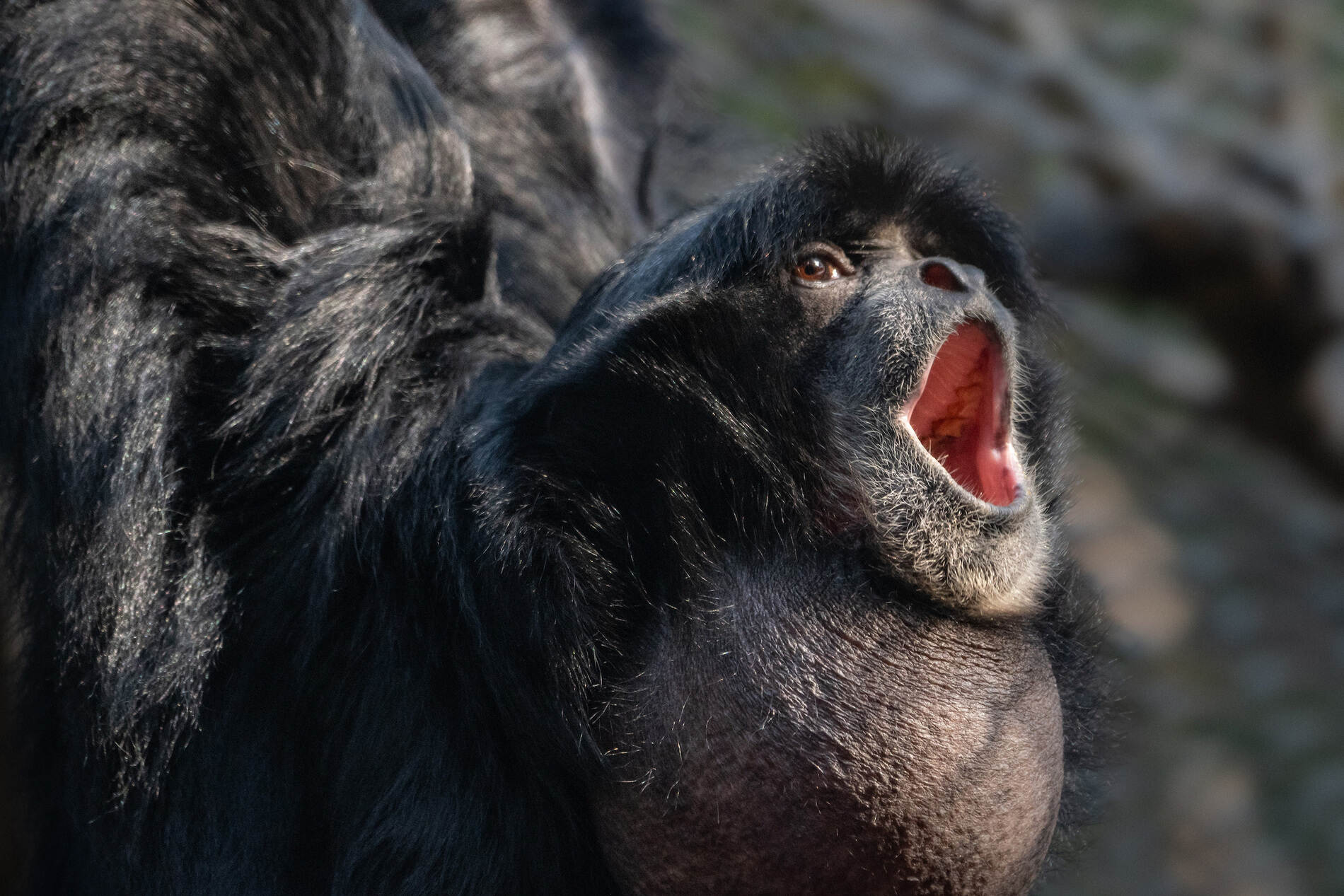
Siamangs are fascinating primates that often capture the curiosity of animal lovers and researchers alike. What makes these creatures so special? For starters, they are the largest of the gibbon family, known for their impressive vocal abilities and unique social structures. Found primarily in the forests of Malaysia, Thailand, and Sumatra, these arboreal acrobats spend most of their lives in the treetops. Their diet mainly consists of fruits, leaves, and flowers, making them vital for seed dispersal in their habitats. Siamangs are also known for their distinctive throat sacs, which amplify their calls, allowing them to communicate over long distances. Want to learn more about these incredible animals? Dive into these 25 intriguing facts about siamangs!
Meet the Siamang
The Siamang is a fascinating primate known for its unique characteristics and behaviors. Native to the forests of Southeast Asia, these creatures have captured the interest of scientists and animal lovers alike.
- Siamangs are the largest of the gibbon family, weighing up to 30 pounds.
- They have a distinctive throat sac that can inflate to the size of a grapefruit, amplifying their calls.
- These primates are known for their loud, complex vocalizations, which can be heard up to two miles away.
- Siamangs are primarily arboreal, spending most of their lives in the trees.
- Their long arms, which can span up to five feet, are perfect for brachiation, or swinging from branch to branch.
Habitat and Distribution
Understanding where Siamangs live helps us appreciate their role in the ecosystem. Their habitats are crucial for their survival and well-being.
- Siamangs are found in the rainforests of Malaysia, Thailand, and Sumatra.
- They prefer dense, tropical forests with plenty of tall trees.
- These primates are territorial and live in family groups, defending their area with loud calls.
- Deforestation poses a significant threat to their natural habitat.
- Conservation efforts are in place to protect their forest homes and ensure their survival.
Diet and Feeding Habits
What Siamangs eat is as interesting as their other behaviors. Their diet is diverse and plays a vital role in their health.
- Siamangs are primarily frugivores, meaning they eat mostly fruit.
- They also consume leaves, flowers, and insects to supplement their diet.
- Their favorite fruits include figs and other soft, pulpy fruits.
- Siamangs have a slow metabolism, allowing them to go longer between meals.
- They play a role in seed dispersal, helping to maintain the health of their forest environment.
Social Structure and Behavior
The social lives of Siamangs are complex and intriguing. Their interactions with each other reveal much about their intelligence and emotional depth.
- Siamangs form monogamous pairs, often staying with the same mate for life.
- Family groups typically consist of a mated pair and their offspring.
- They engage in mutual grooming, which strengthens social bonds.
- Young Siamangs stay with their parents until they reach maturity, around 7-8 years old.
- These primates are known for their playful behavior, often seen swinging and chasing each other through the trees.
Conservation Status
The future of Siamangs depends on our efforts to protect them. Their conservation status highlights the challenges they face.
- Siamangs are currently listed as Endangered on the IUCN Red List.
- Habitat loss due to logging and agriculture is the primary threat to their survival.
- Illegal pet trade also poses a significant risk to their populations.
- Conservation programs focus on habitat preservation and anti-poaching measures.
- Zoos and sanctuaries play a crucial role in educating the public and supporting breeding programs.
Final Thoughts on Siamangs
Siamangs are fascinating creatures with unique traits. Their distinctive throat sacs allow them to produce loud calls that can be heard up to two miles away. These primates are known for their strong family bonds and often form lifelong partnerships. Living in the treetops of Sumatra and Malaysia, they play a crucial role in their ecosystems by dispersing seeds and maintaining forest health.
Their diet mainly consists of fruits, leaves, and flowers, making them important for biodiversity. Unfortunately, habitat loss and illegal pet trade threaten their populations. Conservation efforts are essential to protect these incredible animals and their habitats.
Understanding and appreciating the siamang helps raise awareness about the importance of conservation. By learning about their behaviors and challenges, we can contribute to efforts aimed at preserving these remarkable primates for future generations.
Was this page helpful?
Our commitment to delivering trustworthy and engaging content is at the heart of what we do. Each fact on our site is contributed by real users like you, bringing a wealth of diverse insights and information. To ensure the highest standards of accuracy and reliability, our dedicated editors meticulously review each submission. This process guarantees that the facts we share are not only fascinating but also credible. Trust in our commitment to quality and authenticity as you explore and learn with us.
